Exploring the dark waters of desires with her latest piece, Dead Skin, at Frascati
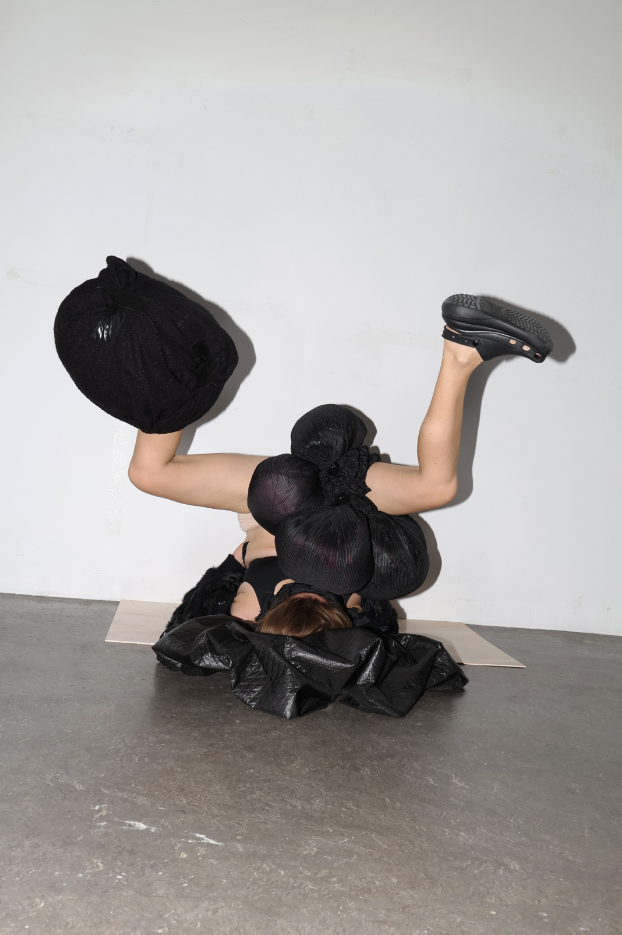
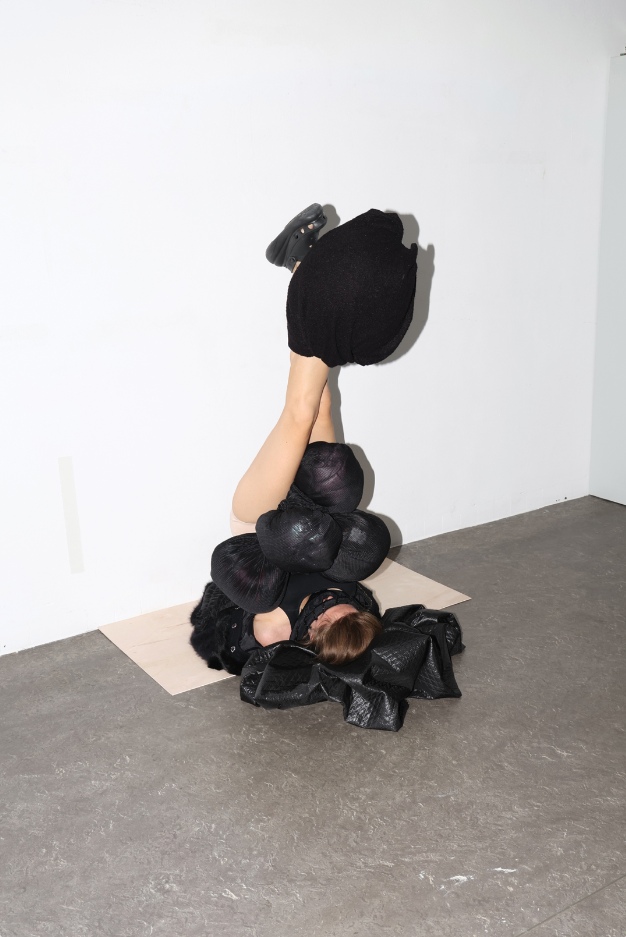
Director, singer and performer Maria Magdalena Kozłowska is a multi-hyphenate artist whose roots lie within the power of music. Coming from her first production with Frascati Producties in 2021 (COMMUNE), the artist is back with Frascati Producties this December for the much-anticipated launch of her piece Dead Skin. The Amsterdam-based public art house is known for seeking “confrontation with the city as a barometer of society”, and is thus the perfect space for Kozłowska’s work to flourish. Speaking with the artist in light of her upcoming work — we investigated the humour in fashion and the depth in which “things” can play a role in our lives.
Hey Maria — How are you?
Good thanks! It’s an interesting day because yesterday the poster for the show got “exposed”. It’s on display and it feels a little weird when something personal becomes visible to everyone. Each time I’m shaken by that!
I can so see that, it’s a vulnerable moment for any artist.
Very much. But it’s a good feeling. It helps you realise that your work will actually be out there. You think about people viewing it constantly but when you see that it’s inevitable and going to happen, it’s an interesting cocktail of anxiety, excitement, and desire to surprise others, to be surprised. It’s a great feeling, but it’s complicated.
It’s exhilarating. I was very excited to see that you’re going to be showing your work at Frascati. How did this opportunity come forward?
It started with an experimental opera that I had done with two flautists, Teresa Costa and Beatrice Miniaci, during the pandemic, and I was invited to develop the work in-house. That was my previous work “COMMUNE”. Now, I am something that is called an “Associate artist” with Frascati Producties, which means we’re in a long-term conversation and collaboration. It’s such a blessing and a privilege to have a production house that supports you.
What can you tell me about the piece you’ll be showing at Frascati?
It began with an obsession (I don’t want to call it an obsession, but it’s always interesting to dramatize things and call something an obsession) with the idea of an emancipated object. Each ‘thing’ to me has a very specific universe around it. It then became a bit of a horror-esque vision of the body being consumed by clothes and objects. I just got very interested in how this could play out visually — also, philosophically.
This is what you refer to as Thing Theory, right?
Yes, I studied philosophy back in Poland and it often informs my work. . . I’m not interested in literal translations though. Thing Theory belongs to the realm of critical theory around human-object relations. Many artists, like surrealists, were speculating about surprising, unexpected encounters with objects, about the displacement of their regular position as servants to human needs. We can add a spice of danger into it – what if an object is only waiting to consume you or have an uncanny erotic relationship with you? I thought it’d be an interesting angle to look at fashion from. It’s all about clothes and accessories – the humans wearing them are always a little bit like mannequins. So maybe the objects of fashion have a little bit more agency than ordinary ones.
It’s a double-edged sword, I believe. I described it as ‘consumerist creatures’ – it’s almost like sculptures are formed by connecting the body with the things themselves.
Exactly. The piece is very much exploring and asking questions about our greed, our desire to consume in a monstrous sense – we like to devour, to devour the world and its resources, devour experiences and people. Also, our culture encourages us to do all of this, to push ourselves to do the most. It is not a moralistic piece though, we’re looking at this gesture with a critical eye, but without telling anyone what to do.
It’s just a reflection.
Also, a thrill for us to dive into the dark waters of our desires. There is a lot of pleasure involved, and we can’t deny it.
I also found there to be a real sense of humour within your work. Coming from the fashion perspective (where everything is so intense and so serious), I found joy in how to take clothes out of this quite stiff context.
I did the same with the opera world as well (which is also stiff and serious for my taste). It’s not really about mocking anything, on the contrary , It all comes from love, from a place of care. I feel like humour is something that creates a certain kind of critical distance that allows us to reflect not only on ourselves, but the whole field we’re dealing with. Some fundamental questions and discoveries can emerge from laughter.
Humour also has a beautiful quality of making art accessible. You don’t have to understand the layers of intention in something, but if you’re able to find humour in it you can connect with the piece.
You’re absolutely right. Laughter is like music – we’re together in it. When we laugh together, it creates an instant sense of community and togetherness. On this very practical level of our brain, when we laugh together our brain tells us we can trust each other. I heard that soldiers when captured and tortured are told to try and make the oppressor laugh, because their brain will tell them they belong together, and it will be much harder for them to hurt them. Unless they’re psychopaths, of course, ha-ha. Laughter is so powerful that it can even save your life.
Along with fashion and art, music is also a huge part of this performance. What can you tell me about this aspect and how it connects to the sculptures?
From the beginning, we were thinking of our dressed-up bodies as musical sculptures. A bit like music boxes – you push a button and some eerie melody comes out. The costumes and set design are created by Jan Tomza-Osiecki, who’s actually a sculptor, so it also comes from his sensitivity, and habit of creating three-dimensional images. I’m sharing the stage with Bjørk Delcroix Semey, who is a jazz double bass player – a female double bass player, which is quite rare. Together, we’re trying to create this constant soundscape to see how music can inform action and create a certain density, which comes from its presence. There is usually a very specific way musicians perform on stage, it’s very much coded. We’re trying to break that code t, and question her relationship with the instrument itself. We are making the double bass one of the performers alongside us. It’s such a huge instrument and also can be seen as quite “masculine”, it’s actually like a monument of masculinity.
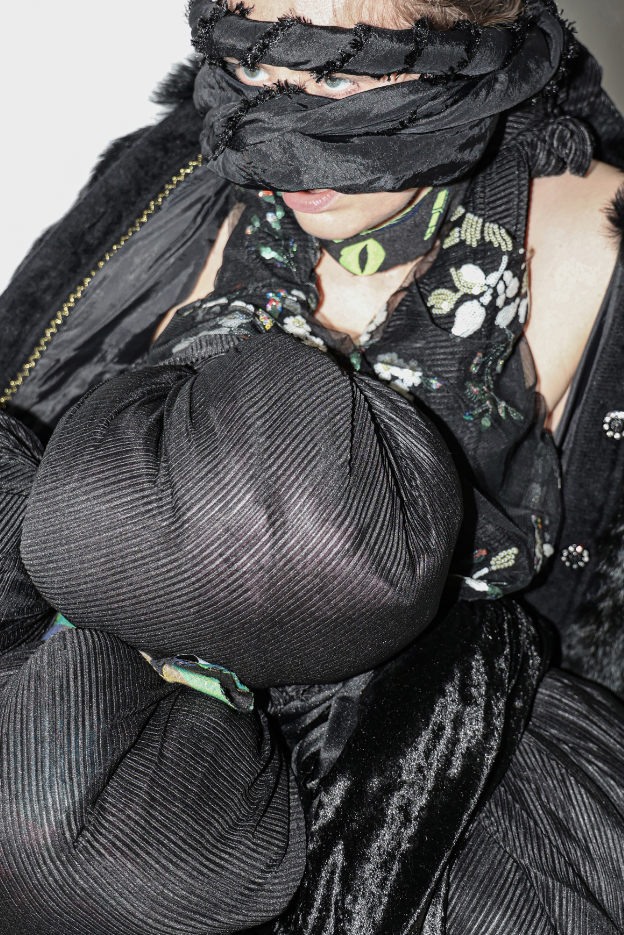
The broadness of it.
It’s really hard to ignore, its presence is just so acute. It can also create a base for a lot of music genres, so its versatility of it was very important to me.
Your background is also rooted in music, is that right? Classical music, in particular.
When I was younger I used to sing jazz at bars and restaurants for money, and I used to be in indie and jazz bands. I studied classical music as a child, but then abandoned it for many years. Now I’m rediscovering it with the help of my wonderful friends and collaborators.
So, it’s inherently within your work?
Absolutely. I work with the directness and intrusiveness of voice and music. It can reach the emotional, even spiritual level of our being, whether we like it or not. It’s very visceral.
As viewers, we also never really understand the power of music until it’s taken away. For example, how scary is a horror film if there is no music?
Yes — I love horror films, even though the imagery haunts me later. I enjoy the atmosphere which is constructed through music and the psychoanalytic background of the plots. I must say that very often, I watch them with no sound (because I’m just so easily scared ha-ha).
You just want the visuals, but not the fear.
Fear often comes mediated by music and silence, the tension between them. We don’t even realise how specialised we’re in feeling those abstract relations, how in tune with their rhythms we are.
It’s a feeling.
It’s organic.
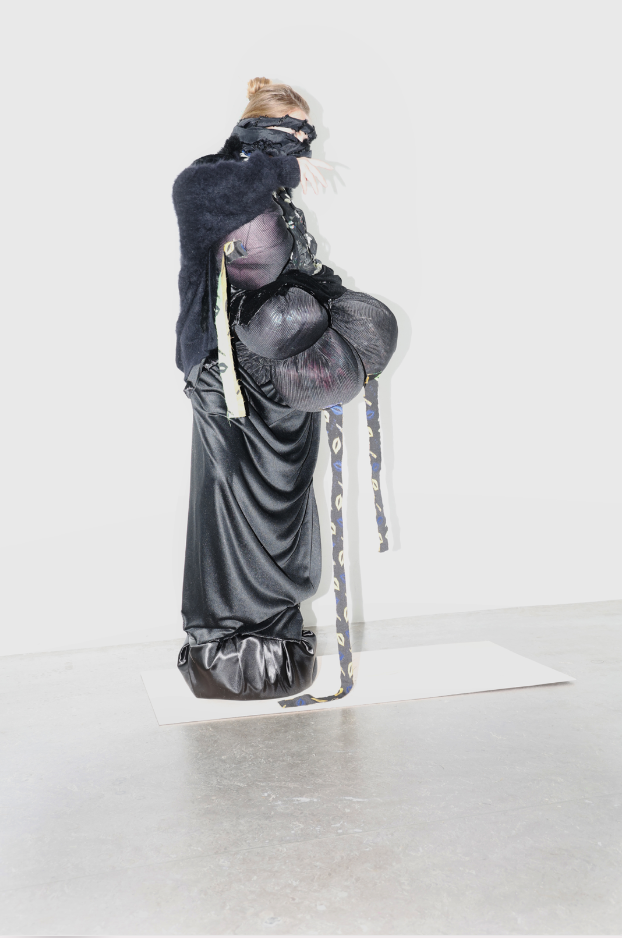
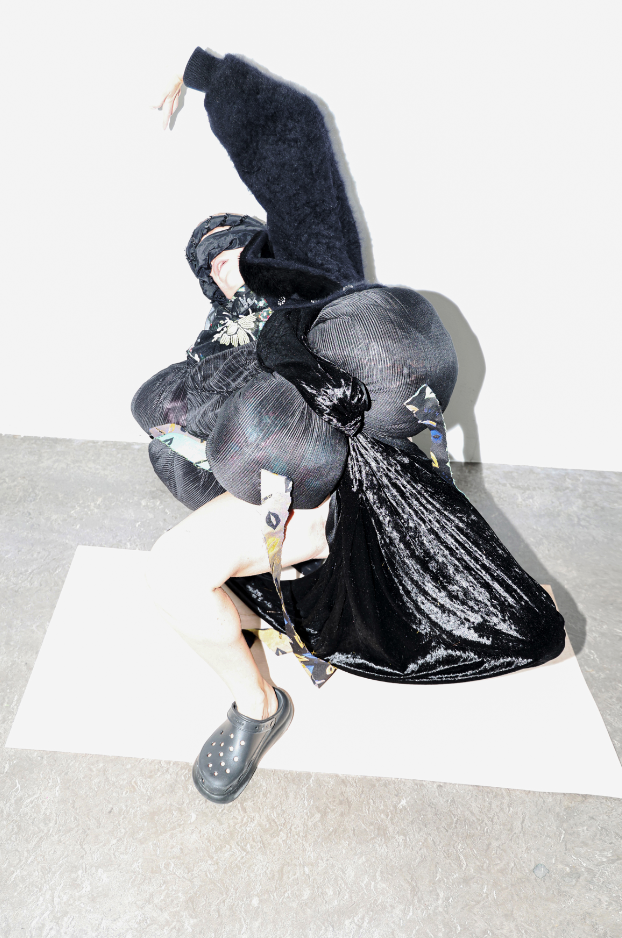
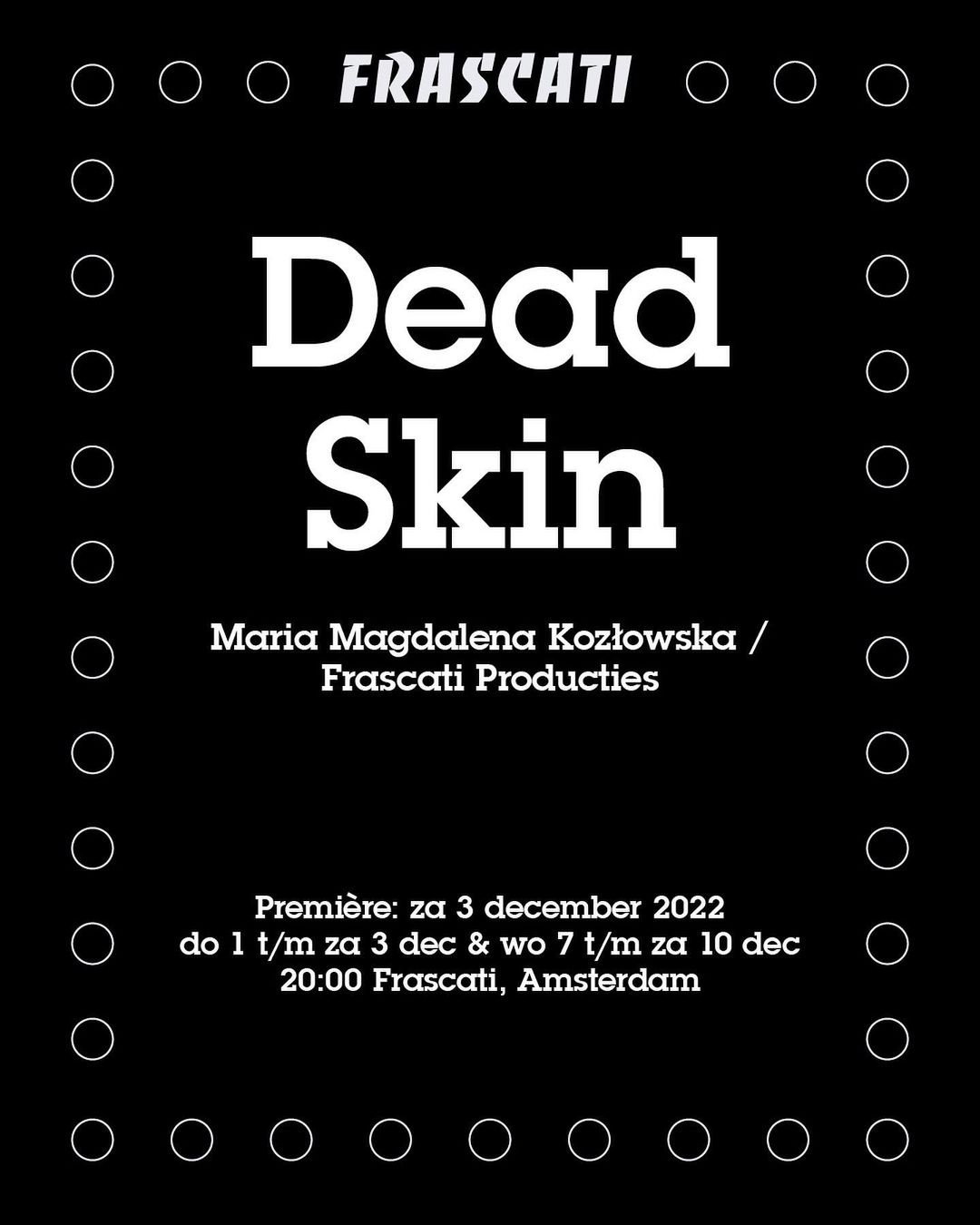
Dead Skin
Maria Magalena Kozłowska / Frascati producties
Thu 1 – Sat 3 & Wed 7 – Sat 10 December 2022
Premiere: Thu 3 December 20:00 at Frascati 4, Nes 73 in Amsterdam
Tickets are available here!
Words by Grace Powell
Photography by Marcin Kaminski
Notifications